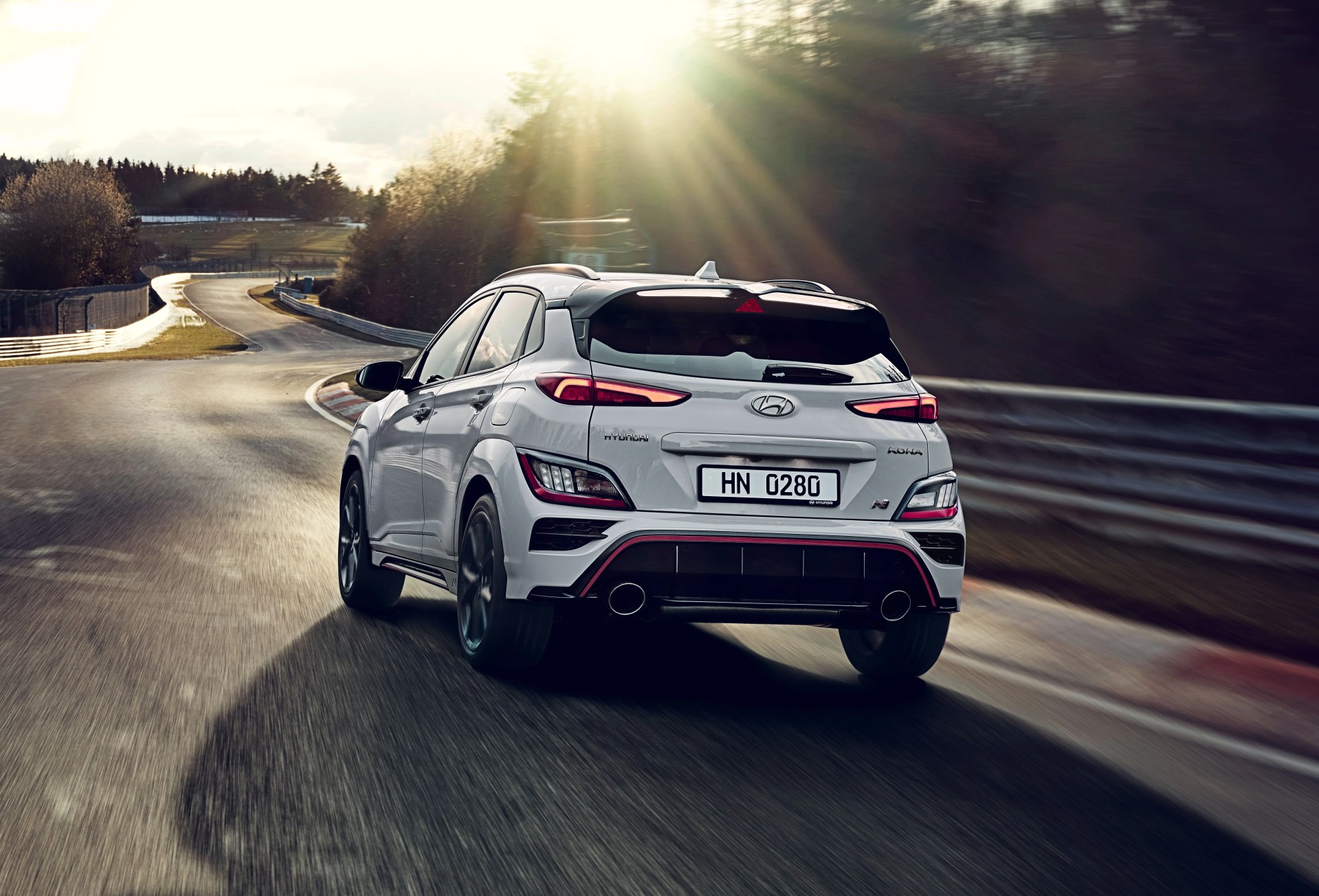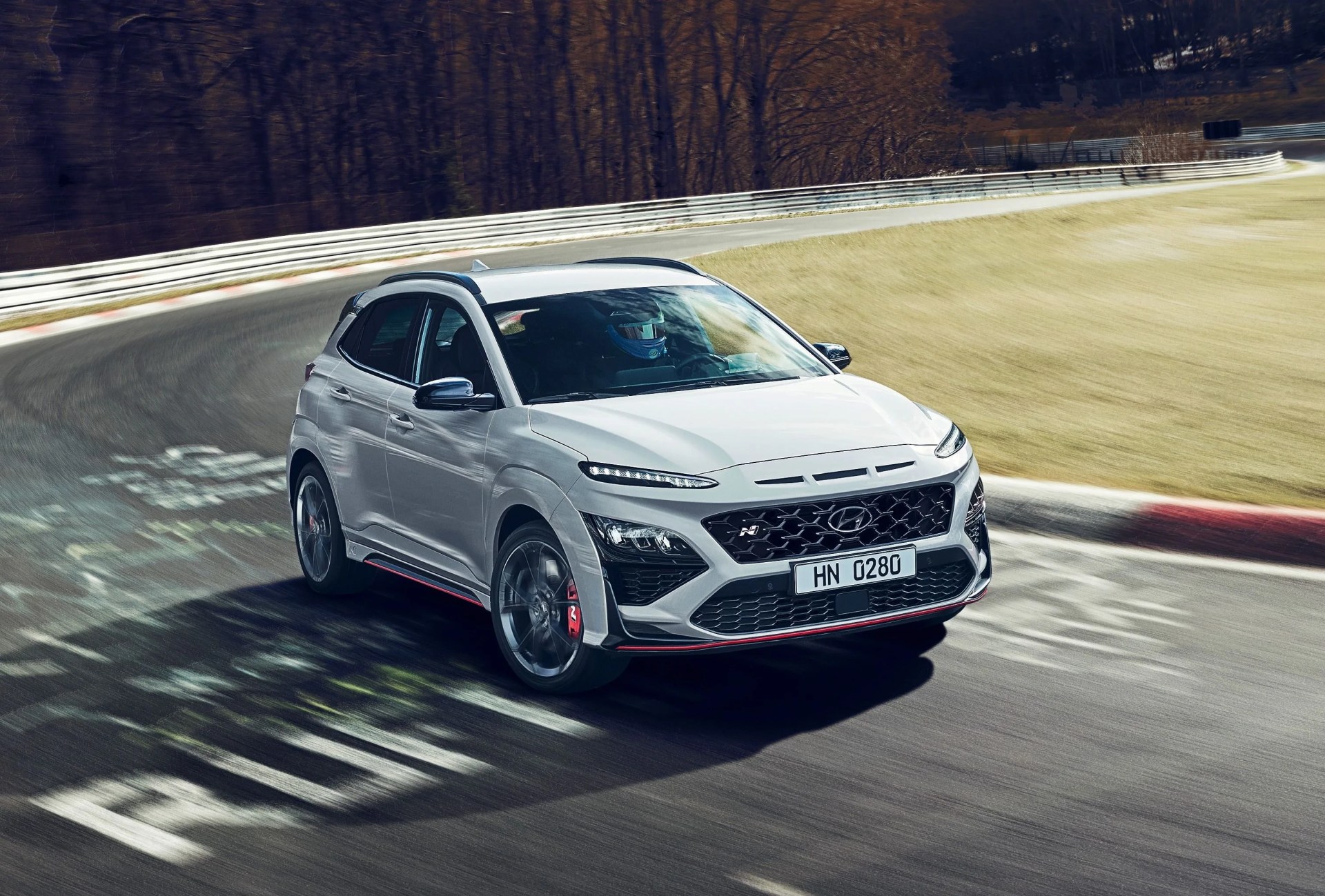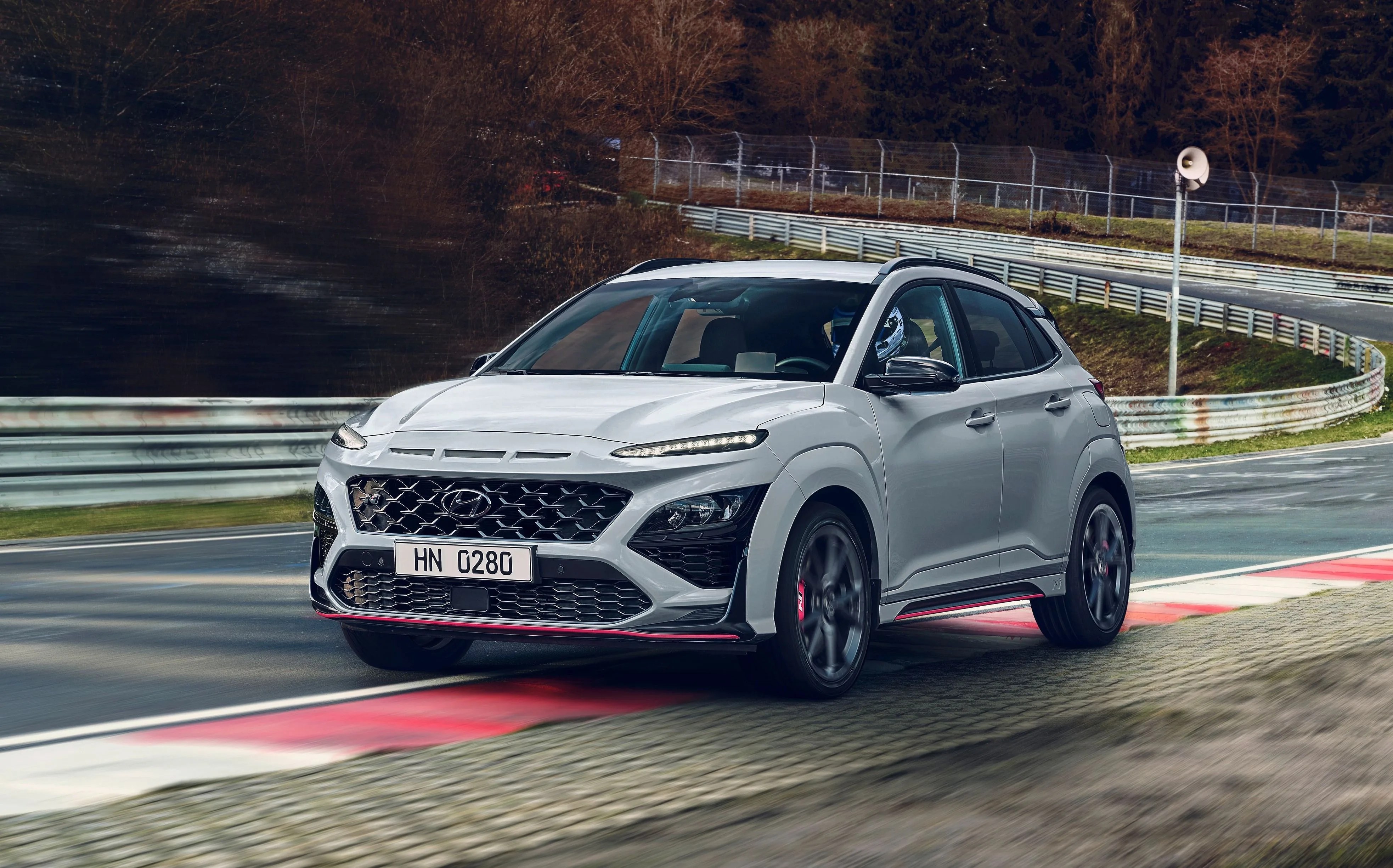Hyundai has made something of a name for itself with the Veloster N. It’s a super fun hot hatchback, but it comes in a funky, not-very-practical three-door body shape buyers don’t really dig. In an ideal world, you’d take the Veloster N engine and dual-clutch transmission setup and place it in a still small, still nimble. but more conventional vehicle — perhaps one you could technically describe as an SUV for sales purposes.
Well, that’s what Hyundai just did with the new Kona N.
The Kona is Hyundai’s subcompact crossover, which slots below the Tucson in the lineup. It was the North American Utility Vehicle of the Year when it debuted. The electric version was named one of the best cars to buy in 2021. And it earns those plaudits for basically handling like a hatchback. Now, Hyundai is adding a “hot” version, cramming the Veloster N’s 2.0-liter turbo putting out up to 286 horsepower (in “N Grin Shift” mode) and its slick-shifting eight-speed dual-clutch transmission.
 Hyundai
Hyundai Hyundai
HyundaiThe Kona N will accelerate from 0-62 mph in 5.5 seconds using launch control, which comes standard. It will hit a top speed of 149 mph, will have an electronic limited-slip differential, handle different terrains and snow and perform like, as Hyundai put it, a “corner rascal.”
Hyundai also added what it describes as video-game-like features. You’ll be able to toggle between custom drive modes at the push of a button, and use onboard lap timing. Europeans will get an N Road Sense feature that will prompt the driver to engage the more hard-edged N mode when there are fun, curvy roads ahead.



